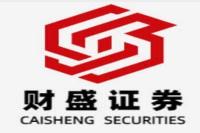Tesla's Optimus: A Giant Leap for Humanoid Robots? (Meta Description: Tesla Optimus robot, humanoid robot, AI, robotics, Tesla, Elon Musk, automation, future of work)
Imagine a world where robotic companions seamlessly integrate into our daily lives, handling chores, providing assistance, and even offering companionship. This isn't science fiction; it's the rapidly approaching reality Tesla is striving to create with its Optimus humanoid robot. Recent footage showcasing Optimus's remarkably dexterous new hand has sent shockwaves through the tech world, igniting a global conversation about the potential – and the perils – of advanced robotics. This isn't just about a cool gadget; it's about a potential paradigm shift in manufacturing, healthcare, and even our homes. Think about it: a robot capable of performing delicate tasks, assisting the elderly, and even potentially replacing dangerous or repetitive jobs. The implications are staggering, leading to both immense excitement and justifiable apprehension. This detailed analysis delves into the latest advancements in Optimus, exploring the engineering marvels behind its capabilities, addressing common concerns surrounding its autonomy and safety, and speculating on the transformative impact it could have on our future. Get ready to explore the fascinating world of Optimus, a robot poised to redefine the relationship between humans and machines. Prepare to be amazed, challenged, and possibly a little bit nervous… because the future is closer than you think.
Tesla Optimus: A Technological Marvel
Tesla's Optimus humanoid robot is rapidly evolving, and its recent advancements are nothing short of breathtaking. The latest video showcasing Optimus deftly catching a thrown tennis ball highlights a significant leap in dexterity and precision. This isn't your grandpappy's clunky robot; Optimus's new hand boasts an impressive 22 degrees of freedom (DOF), double that of its predecessor. For context, the human hand has 27 DOF, meaning Optimus is getting awfully close to replicating the intricate movements of a human hand. This increased dexterity isn't just a cool party trick; it's a game-changer, opening up a world of possibilities for its applications. Imagine a robot capable of assembling intricate electronics, performing delicate surgery, or even providing personalized care for the elderly—all thanks to this remarkable engineering feat.
The engineering behind this achievement is truly impressive. Tesla engineers, like Milan Kovac, have meticulously crafted a robotic hand that combines advanced mechanics, sensor technology, and sophisticated control algorithms. The integration of tactile sensors is also crucial, allowing Optimus to "feel" the tennis ball and adjust its grip accordingly. This level of sensory feedback is essential for performing complex tasks requiring precision and adaptation. Kovac highlighted the challenges involved in balancing the need for robust protection with the sensitivity required for accurate tactile sensing. It's a testament to Tesla's commitment to pushing the boundaries of what's possible.
Optimus's Capabilities: Beyond Catching Tennis Balls
While the tennis-catching demonstration grabbed headlines, Optimus's capabilities extend far beyond this impressive feat. The robot has demonstrated the ability to perform a range of tasks, from mimicking human movements (like Kim Kardashian showcasing in a recent social media post) to potentially more complex activities like those mentioned by Elon Musk himself: childcare, dog-walking, yard work, grocery shopping, and even companionship. While these are ambitious claims, the progress shown in the tennis ball video suggests that Tesla is making significant strides towards realizing this vision. However, it's important to note that many of these demonstrations currently involve remote operation, indicating that full autonomy is still under development.
Tesla's ambitious roadmap envisions Optimus robots taking on tasks within Tesla factories as early as next year, focusing on "dangerous, repetitive, and boring" jobs. This is a significant step towards automating manufacturing processes and improving worker safety. The long-term plan is to eventually make Optimus available to other companies and, ultimately, consumers. Musk's vision is a world where a personal Optimus robot could become as commonplace as a smartphone — a truly transformative prospect.
The Price Point and Market Potential
The projected price point for Optimus is initially estimated at around $30,000, with future plans to reduce it to $20,000. While this might seem expensive, consider the potential return on investment for businesses. The cost of human labor, including wages, benefits, and training, can significantly outweigh the cost of a robot capable of performing the same tasks efficiently, reliably, and 24/7. Moreover, the ability to automate dangerous or repetitive tasks could significantly reduce workplace accidents and improve worker well-being.
The potential market for Optimus is vast, encompassing various sectors:
- Manufacturing: Automating assembly lines, improving efficiency, and enhancing worker safety.
- Healthcare: Assisting with patient care, performing repetitive tasks, and potentially even assisting in surgery.
- Logistics: Automating warehousing and distribution processes.
- Home care: Assisting elderly individuals with daily tasks, providing companionship, and enhancing their quality of life.
- Customer service: Providing personalized assistance in retail settings and other customer-facing roles.
The widespread adoption of humanoid robots like Optimus could generate a massive economic impact, transforming industries and creating new opportunities. However, ethical considerations and potential job displacement remain significant concerns that need careful consideration.
Addressing Concerns About Autonomy and Safety
While the advancements in Optimus are remarkable, it's crucial to address the valid concerns surrounding its autonomy and safety. The recent demonstrations, while impressive, primarily involved remote operation. This is a crucial distinction because fully autonomous robots operating in complex environments require significantly more sophisticated AI and safety mechanisms.
The current technological limitations highlight the importance of ongoing research and development in areas like:
- Advanced AI: Developing robust AI algorithms capable of enabling Optimus to make decisions in unpredictable situations and handle unforeseen circumstances safely and effectively.
- Safety protocols: Implementing fail-safes and emergency shutdown mechanisms to ensure the robot's actions are always safe and predictable.
- Ethical considerations: Addressing potential job displacement and ensuring responsible development and deployment of the technology.
It's critical that Tesla, and the broader robotics community, prioritize safety and ethical considerations throughout the development and deployment of Optimus. Transparency and open dialogue are essential to build public trust and ensure that this powerful technology is used responsibly. The development of clear guidelines and regulations will also be crucial to mitigate potential risks and ensure widespread adoption can happen safely.
Frequently Asked Questions (FAQs)
Here are some frequently asked questions about Tesla's Optimus robot:
Q1: Is Optimus fully autonomous?
A1: No, not yet. While Optimus has demonstrated impressive dexterity and capabilities, many of its current demonstrations involve remote operation. Full autonomy requires significantly more advanced AI and safety systems, which are still under development.
Q2: What are the potential applications of Optimus?
A2: Optimus's potential applications are vast, spanning manufacturing, healthcare, logistics, home care, and customer service. It could automate dangerous and repetitive tasks, improve efficiency, and enhance worker safety across various industries.
Q3: How much will Optimus cost?
A3: Tesla initially projects a price of around $30,000, with the goal of reducing it to $20,000 in the future.
Q4: When will Optimus be available to the public?
A4: Tesla aims to deploy Optimus in its own factories as early as next year. The timeline for broader public availability remains uncertain, likely several years away.
Q5: What are the ethical concerns surrounding Optimus?
A5: Ethical concerns include potential job displacement, bias in AI algorithms, and the need for robust safety protocols to prevent accidents. Responsible development and deployment are crucial to mitigate these risks.
Q6: How does Optimus's hand compare to a human hand?
A6: Optimus's new hand features 22 degrees of freedom, significantly improving dexterity compared to previous versions. While it's not yet as capable as a human hand (which has 27 DOF), the progress is impressive and suggests continued development towards human-level dexterity.
Conclusion
Tesla's Optimus represents a significant step forward in the field of humanoid robotics. While full autonomy and widespread public availability are still years away, the progress demonstrated in recent videos is undeniably impressive. The potential benefits of Optimus across multiple sectors are vast, hinting at a future where robots seamlessly integrate into our daily lives. However, the development and deployment of such powerful technology require careful consideration of ethical implications and safety concerns. Open dialogue, responsible innovation, and clear regulatory frameworks will be crucial to ensure that Optimus, and similar technologies, are deployed responsibly and benefit humanity as a whole. The journey is far from over, but the destination – a future shaped by intelligent, capable robots – is becoming increasingly clear.



